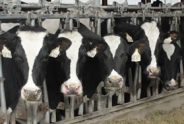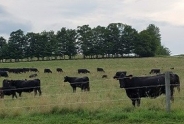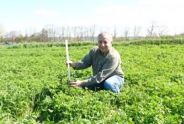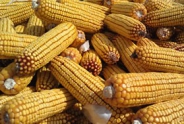1st Cutting Forage Quality Update ~ May 28, 2019
Kevin Ganoe, Area Field Crop Specialist
Central New York Dairy and Field Crops
Warmer weather continued this week as alfalfa on average was 5 inches taller than the previous week. Fiber levels have risen such that most all grass or mostly grass fields are below dairy quality and should be left so you can pursue fields that are all alfalfa or alfalfa grass mixes.
Credit to David Balbian, Ashley McFarland, Nicole Tommell, Mark Schmidt, Sarah Ficken and Tess Southern for gathering the info in the field.
We hope the information provided over the past month has served as a guide to know when to harvest. This will be our last report until May 2020.
Here are numbers that are helpful when using alfalfa and grass height as an indicator of NDF content. In general:
Begin cutting 100% grass stands should be cut when nearby alfalfa is 14 inches tall to achieve the desired 50% NDF.
Begin cutting 50/50 mixed alfalfa and grass stands when nearby alfalfa is 22 inches tall for the desired 44% NDF.
Begin cutting 100% alfalfa stands when alfalfa is 28 inches tall for the desired 40% NDF.
The desired NDF for all grass fields is 50%, 50/50 mixed alfalfa and grass fields is 44%, and pure alfalfa stands is 40%. Predicted days to cut are based on daily NDF increases for grasses of 1% point, 50/50 mixed stands of .8% points and alfalfa of .5% point. Typically, NDF increases about 0.8 to 1.2/day for grasses expecting the lower end of that range in cooler weather and the higher end in warm. Alfalfa NDF increases about 0.4 to 0.7/day again figuring the lower end of that range with cool temperatures and the higher in warm. Predictions are adjusted for the coming week's weather and right now we are assuming normal growth.
In the tables in the pdf, locations around the region are listed where we have measured alfalfa height. You can use the location and elevation as a guide to conditions that may be similar to your own. Always check your fields to verify your heights and conditions!
On average the alfalfa height increase this week was 5 inches with an average location height of 26 inches. Normal to above average Growing Degree Days (GDDs) over the past week kept alfalfa maturing quickly.
As of this date, sixteen (25%) of the sixty-three locations have been cut. Predictions indicate that, with the exception of two locations, all pure alfalfa fields should be cut in the next week. As was indicted in our last summary note how high the %NDF is at some locations for pure or mostly grass stands. For making dairy quality feed 55% NDF should be given consideration as a cutoff point for fields that are all grass. With two exceptions the grass is below dairy quality now at all locations.
We hope that these summaries have continued to provide guidance for when to cut even if the weather hasn't been cooperating much this year.
5-28-19 1st Cutting Forage Quality Summary (pdf; 706KB)
Upcoming Events
2026 Dairy Day
January 13, 2026 : Dairy Day - Hamilton
Hamilton, NY
Lunch included
January 14, 2026 : Dairy Day - Ballston Spa
Ballston Spa, NY
Lunch included
2026 Corn & Soybean Day
January 20, 2026 : Corn & Soybean Day - Hamilton
Hamilton, NY
Lunch included. 2.75 DEC Credits available
January 21, 2026 : Corn & Soybean Day - Ballston Spa
Ballston Spa, NY
Lunch included. 2.75 DEC Credits available
Announcements
Statewide Field Crop Pathology Needs Assessment Survey
Your input is wanted for identifying priorities!Sign Up for Our Weekly E-Newsletter
We send out a bi-weekly e-newsletter that has announcements, upcoming programs, and opportunities for you! Registration is quick, easy, and free. Click here to sign up today!Farmers Can Join MeatSuite For Free!
MeatSuite.com is a free resource provided by Cornell University where NY meat farmers can create a farm profile and list their bulk (wholes, halves, quarters) and bundled (i.e. Grilling Bundle) meat products.Why should farmers join?
1. It's free and easy!
2. Connect with more local customers. In the past year the MeatSuite.com farm directory had 8,300 visits from New York consumers. Farm profiles get as many as 25 views per month from potential local customers. We also spotlight MeatSuite farms on social media and bring attention and purchases to farms through highlights and giveaways.
How do I join?
Farmers can visit https://www.meatsuite.com/farmers/ to create a free farm profile. You must list at least one product for your farm's profile to go live. You'll also have access to Cornell's free Meat Price Calculator, a helpful tool for pricing your meat to make a profit.
While you're on MeatSuite, check out the "Creating Consumer-Friendly Bulk Meats" publication on the log-in page. It has tips on how to create bulk meat products that are easier for first-time buyers to say "yes" to.
If you have any questions as you create your farm profile or products, we're here to help! Please email Matt LeRoux at mnl28@cornell.edu.




